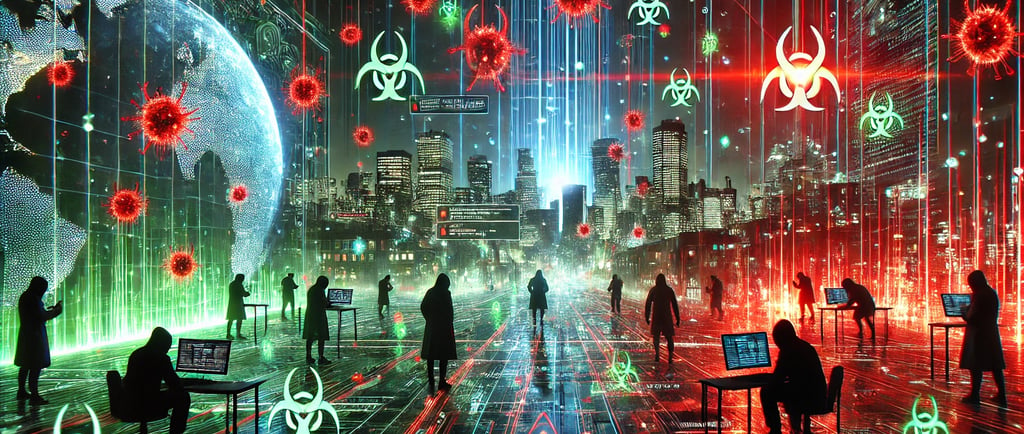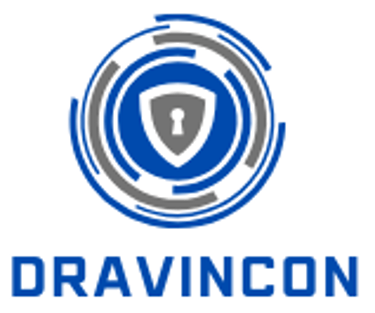Limited Time Deal: Get your First Cyber Assessment Free and have a Preliminary Risk Register created.
The Illusion of Security: How Vulnerable Are We in the Digital Age?
In today’s hyper-connected world, cybersecurity is no longer just an IT concern—it’s a critical issue that affects individuals, businesses, and even governments. Every day, we create and share massive amounts of data across networks, often under the false assumption that we are protected. The truth? We are more vulnerable than ever. Hackers are constantly evolving, exploiting security flaws in ways most people never consider.
2/21/20252 min read


The Rise of Cyber Threats: A Digital Battlefield
Cyberattacks are no longer rare occurrences. According to cybersecurity reports, a cyberattack happens every 39 seconds. The cost of cybercrime is projected to hit $10.5 trillion annually by 2025. Some of the most common attack vectors include:
Phishing and Social Engineering
Attackers don’t always need technical expertise to break into systems. Instead, they rely on human psychology. Phishing emails, impersonation scams, and fake websites trick users into revealing sensitive information, such as login credentials and financial details.
Ransomware: The Growing Epidemic
Ransomware attacks encrypt files and demand payment for their release. These attacks have surged due to the rise of cryptocurrencies, making it easier for hackers to demand untraceable payments.
The WannaCry ransomware attack in 2017 affected 230,000+ systems worldwide, exploiting a vulnerability in Windows SMBv1.
IoT (Internet of Things) and Smart Device Vulnerabilities
As smart homes and IoT devices become more common, they introduce new security risks. Many devices ship with default passwords and outdated firmware, making them easy targets for botnets like Mirai, which launched one of the largest DDoS attacks in history.
Zero-Day Exploits and Supply Chain Attacks
Zero-day vulnerabilities—security flaws that are unknown to the vendor—are highly valuable to hackers and nation-state actors. Supply chain attacks, where hackers infiltrate trusted software providers, have also increased.
The SolarWinds attack in 2020 affected over 18,000 organizations, including U.S. government agencies, after attackers inserted malicious code into a software update.
Cybersecurity Myths That Put You at Risk
Even with growing threats, many still believe in these cybersecurity misconceptions:
🚫 “I’m not important enough to be hacked.”
➡️ Reality: Everyone has valuable data. Hackers target individuals for identity theft, financial fraud, and ransomware.
🚫 “Antivirus software is enough to protect me.”
➡️ Reality: Antivirus alone is outdated. Modern threats require behavioural-based security and AI-driven detection.
🚫 “My cloud data is 100% safe.”
➡️ Reality: Misconfigured cloud services (AWS S3 buckets, Azure, Google Cloud) are a prime target. Implement strong IAM policies and monitor access logs.
Advanced Cybersecurity Strategies for 2025
Basic security measures are no longer sufficient. Organizations and individuals must adopt advanced tactics:
1. Zero Trust Architecture (ZTA)
The traditional security model assumes everything inside a corporate network is safe. Zero Trust challenges this by enforcing strict identity verification for every access request.
Key Zero Trust Components:
✅ Multi-Factor Authentication (MFA) for all critical systems.
✅ Role-Based Access Control (RBAC) to limit permissions.
✅ Micro segmentation to isolate sensitive resources from potential threats.
2. Artificial Intelligence and Machine Learning in Cybersecurity
AI-powered security tools can detect anomalies and stop threats in real time. Examples include:
🔹 Darktrace: AI-driven network monitoring to detect cyber threats.
🔹 Microsoft Defender for Endpoint: Uses machine learning to identify malware behavior.
3. Threat Intelligence and Proactive Defence
Organizations must shift from a reactive approach to proactive threat hunting.
🔹 Use threat intelligence feeds (MITRE ATT&CK, AlienVault OTX).
🔹 Conduct regular penetration testing.
🔹 Deploy honeytokens to detect unauthorized access attempts.
Conclusion: The Digital Age Demands Cyber Vigilance
We live in an era where digital security is an illusion for many. The assumption that we are safe is dangerous, and the threats continue to evolve. Governments, corporations, and individuals must take proactive measures to defend against cyber threats.
✅ Strengthen security with Zero Trust and MFA.
✅ Keep all software updated to patch vulnerabilities.
✅ Use SIEM tools to monitor logs for threats.
✅ Educate employees on cybersecurity best practices.
The question isn’t if a cyberattack will happen—it’s when. The real challenge is: Are you prepared?

